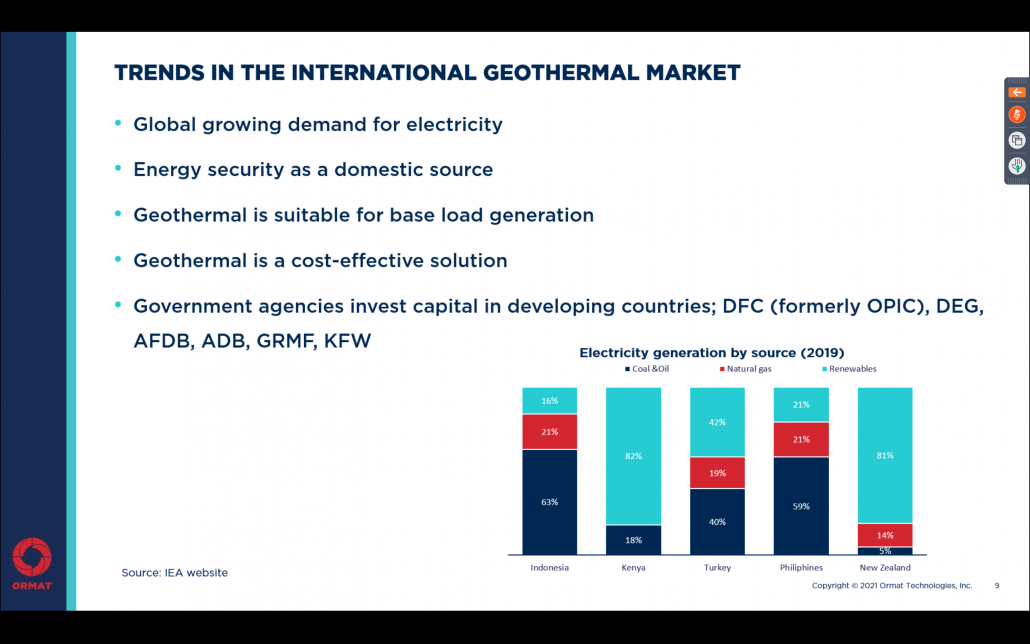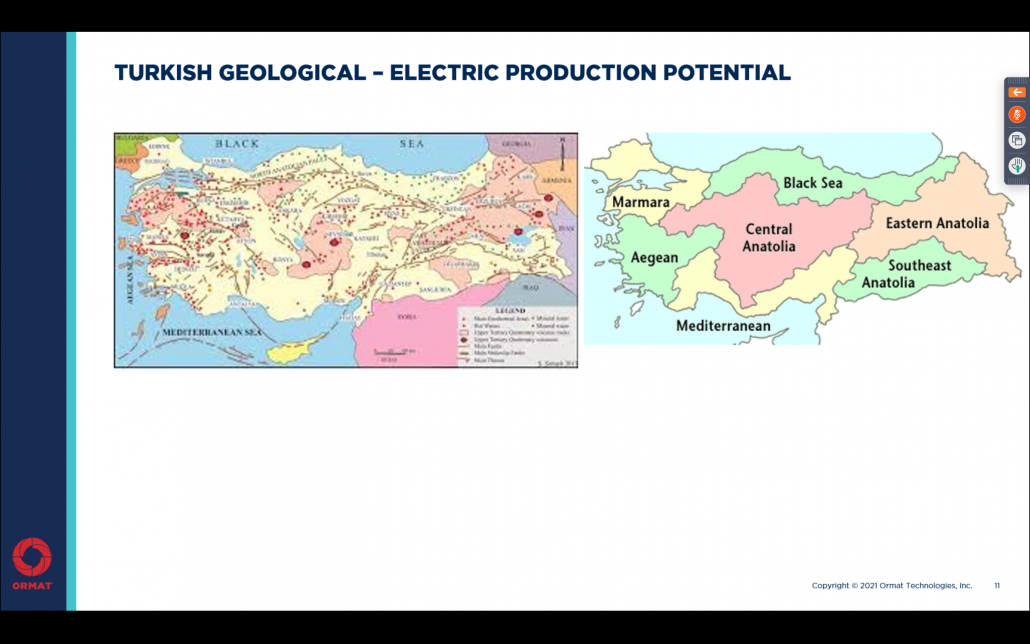LPRC @ Webinar – Recent installations, implications for the future of geothermal in Turkey
On Friday 29, Gauthier Quinonez (LPRC) attended the latest IGN online webinar on geothermal energy organized by Enerchange (PR and Event Agency focusing on renewable energy) and Think GeoEnergy (leading newspaper on geothermal). The event focused on the particular case of Turkish geothermal, its characteristics and future.
Top that occasion, the board invited Gad Shoshan (chairman at the board at the Israel-Turkey business council and chamber of commerce and managing director at Ormat Inc.) to discuss the current state of play. Ormat is a global renewable energy provider based in Reno (Nevada). The company has the particularity to be verse in multiple renewable energy sources (geothermal and recovered energy) as well as energy storage. In addition, with regards to geothermal, they managed to vertically integrate all phases of geothermal (Development, exploration, drilling, engineering, manufacturing, construction, operation and stakeholder management).
First of all, even though Turkey has become famous of over the past decade for its rapid and sustained development of geothermal, the country is still highly reliant on fossil fuels for domestic electricity production (Fig. 1). However, 3 caveats shall be made on this current status. First, all but one active Turkish power plants opened after 2006, highlighting the impressive capacity to adapt to new resources. Second, Turkish geothermal potential hasn’t been reached yet, indicating a possible growing share of geothermal electricity in the Turkish market for the future. Third, most fossil fuel consumption is linked to import from the East, highlighting a threat in local energy security and Turkish authorities made no secret about the need for a change in this matter.

Figure 1: Turkey’s electricity generation per resource
As per January 2021, geothermal energy’s output in Turkey is 1.6 GW produced by 77 power plants (with a mix of Organic Rankine Cycle[1] and flash). Although 77 power plants may seem like a high number for the country it does not meet the high demand of 84 million Turkish and does not cover the huge local geothermal potential. Figure 2 shows current knowledge of Turkish geothermal potential (red areas) and locations of operational plants (ref triangles). Based on the map, it can be concluded that Central and Eastern Anatolia are underexploited vis-à-vis their potential. In addition, there is still a lack of exploration and research to determine the true potential of the Mediterranean and Black Sea regions.

Figure 2: Turkish geothermal potential
All and all, the Turkish geothermal case study proves that the technology can be developed quickly and efficiently (76 power plants in under 15 years) despite a somewhat shaken economy (current devaluation of YLT and high unemployment). Lessons can be learned globally from the Turkish case.
[1] Organic Rankine Cycle is a technology that convert low-temperature heat sources into a mechanical energy, and it can be used to produce electrical energy in a closed system.
